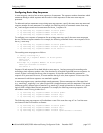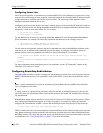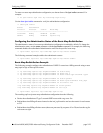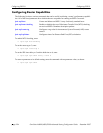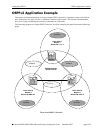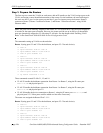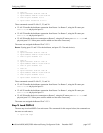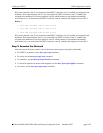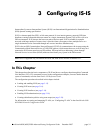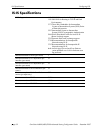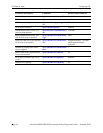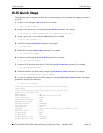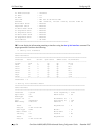
Configuring OSPFv3 OSPFv3 Application Example
OmniSwitch 6800/6850/9000 Advanced Routing Configuration Guide December 2007 page 2-29
IPv6 router interface vlan-12 was associated with OSPFv3 interface vlan-12, enabled, and assigned to the
backbone. IPv6 router interface vlan-23 was associated with OSPFv3 interface vlan-23, enabled, and
assigned to the backbone. IPv6 router interface vlan-20, which connects to end stations and attached
network devices, was associated with OSPFv3 interface vlan-20, enabled, and assigned to Area 0.0.0.2.
Router 3
-> ipv6 ospf interface vlan-23 area 0.0.0.0
-> ipv6 ospf interface vlan-31 area 0.0.0.0
-> ipv6 ospf interface vlan-30 area 0.0.0.3
IPv6 router interface vlan-23 was associated with OSPFv3 interface vlan-23, enabled, and assigned to the
backbone. IPv6 router interface vlan-31 was associated with OSPFv3 interface vlan-31, enabled, and
assigned to the backbone. IPv6 router interface vlan-30, which connects to end stations and attached
network devices, was associated with OSPFv3 interface vlan-30, enabled, and assigned to Area 0.0.0.3.
Step 5: Examine the Network
After the network has been created, you can check the various aspects using show commands:
• For OSPFv3 in general, use the show ipv6 ospf command.
• For areas, use the show ipv6 ospf area command.
• For interfaces, use the show ipv6 ospf interface command.
• To check for adjacencies formed with neighbors, use the show ipv6 ospf neighbor command.
• For routes, use the show ipv6 ospf routes command.



